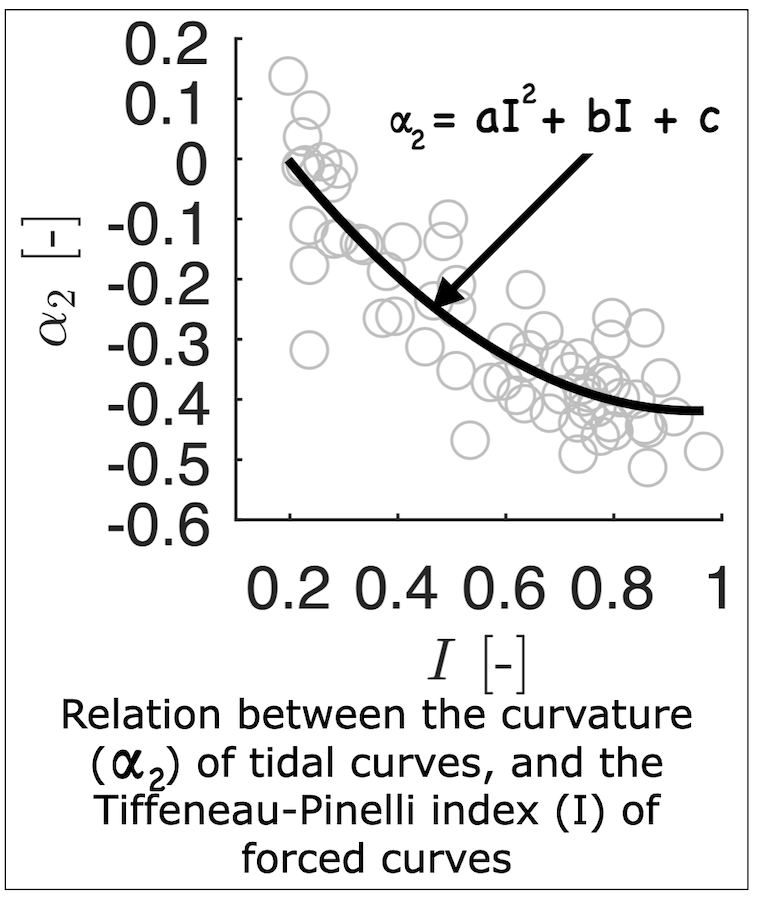Abstract
Background. The remote monitoring of tidal spirometry based on nasal pressure [Hebbink & Hagmeijer, Med. Eng. Phys, 97, 2021] seems promising in view of the current transition from hospital-based to home-based health care, but tidal curves are hardly used and their relation with conventional spirometry is largely unknown.
Objective. In this work we try to reveal the relation between tidal and forced spirometric curves.
Method. Tidal and forced curves were measured in 58 subjects that were either healthy, suffered from diseases like COPD or asthma, or had transplanted lungs. We first let them breathe normally for two minutes while monitoring their nasal pressure, and then subjected them to conventional spirometry. In 8 COPD-patients that were hospitalized due to an exacerbation, follow-up measurements were done two weeks and three months after discharge.
Results. Tidal flow-volume curves found in different patients with similar forced curves differ considerably, but their average shape varies in a characteristic way with varying Tiffeneau-Pinelli index. This is particularly true for a coefficient ?2 that was designed to represent the curvature of tidal curves, see the figure.
Conclusions. The observed shape variation with varying index leads to an objective ranking of tidal curves, which links them to gold standard spirometry. As a future perspective, remote daily measurements of tidal curves may help to predict COPD exacerbations.